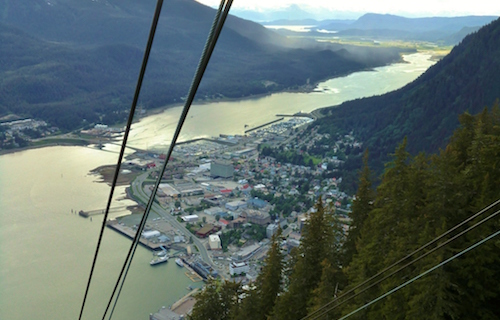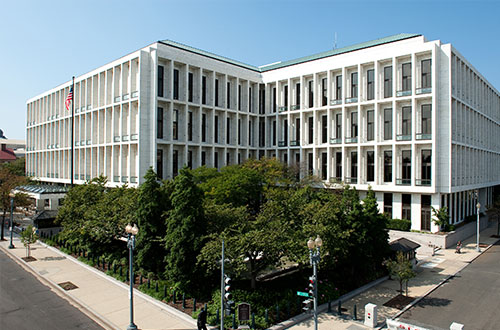Remarks To National Indian Education Association
President Gilbert, Tribal leaders, Educators and Friends.
Good morning. It is both an honor and a pleasure to be here with you today to talk about my vision for the future of Native American education. Native children should not have to suffer from a second class education simply because they are on reservations or remote villages. I want to see an education system that equips our American Indian, Alaska Native, and Native Hawaiian children with an education that is second to none. An education that equips our Native youth to take their lives in any direction they choose. We need a system that values and preserves Native cultures by incorporating them into our schools, so that Native children are engaged and inspired.
I would like to thank NIEA for their dedicated efforts and invaluable help in getting the Ester Martinez Native Language Revitalization Act passed into law last Congress.
The importance of that act is highlighted by the late Chief Marie Smith Jones, she was the last full-blooded Eyak and last Native speaker of the Eyak language. She was a fierce and feisty activist for Indian rights, who left a legacy to her people—her wonderful recordings in the Eyak tongue. It’s a tragedy that young people have only those recordings of their own language and no living speakers, but nonetheless a great blessing to have the gift that Marie has left behind.
According to Michael Krauss, founder of the Alaska Native Languages Center at the University of Alaska, there are six Native languages in Alaska alone that have only the lives of 25 speakers standing between them and total extinction. It is imperative that we help Native communities that are trying to revitalize their languages through their local schools.
To that end, I introduced the School Accountability and Improvements Act which amends the No Child Left Behind Act, to, among other things, achieve that goal. My legislation would provide essential flexibility in meeting Adequate Yearly Progress goals to schools that provide Native language instruction immersion programs.
For those schools that have incorporated Native language programs into their early curriculums, grades K-3, there may be no valid or reliable way to assess whether the students have met the State standards in their Native language. It is not a fair, reliable, or valid assessment of a student’s achievement to test in a language for which they do not have proficiency. NCLB must address this issue.
For example, in Alaska, the Lower Kuskokwim School District has a Yupik language immersion program in grades K-3 to inspire the Native children to connect with their education and their Yupik heritage.
These children are reading in Yupik, doing their math in Yupik, doing science experiments in Yupik. Then, in third grade while they are still being taught in Yupik, they are required, under No Child Left Behind, to test in English. Not surprisingly, they don’t fare so well on this initial test. Does this mean the Yupik language program is not working? I don’t think so.
On the contrary, I believe–and research tells us—that language programs are beneficial for students.
The flexible approach in my legislation would not penalize schools in States with no assessment test in the Native language. Instead, these schools would be recognized for improvements in students’ proficiency.
I have been privileged to be able to work on Native education issues both through my service on the Senate Committee on Indian Affairs for the past 5 years and now on the Health, Education, Labor and Pensions Committee (known as the HELP Committee). Wearing both of these hats enables me to advocate on two fronts for improving educational opportunities for Native American, Alaska Native, and Native Hawaiian children.
This Congress we have had a robust education agenda, including—
• making sure that Indian Education programs in No Child Left Behind Act work as intended;
• ensuring that Indian Head Start agencies receive a higher and guaranteed set-aside;
• meeting the postsecondary education needs of Native Americans and the institutions that serve them through the Higher Education Act;
• and reauthorization of the Tribally Controlled Colleges and Universities Act.
The Native education community’s positive voice in all of these legislative efforts has been invaluable. Together, we can and must ensure that Native American communities will flourish.
I am committed to making our educational systems relevant to Native children, youth, adults and communities. We need educational systems where the school curriculum and programs reflect the culture, history, and language of the community so that no student feels out of place—educational systems with teachers and administrators who have lived in and are part of the Native community so that they can relate meaningfully to the children and vice-versa.
This is a commitment with a long history in my family. My father, as a United States Senator, was one of the leading voices in enacting the Native American Languages Act, along with Senator Inouye. And I am proud to carry on this legacy.
If Native children are educated in a culturally-relevant manner, they do better in school. And if they do better in school, they are likely to do better at work, and hopefully, ultimately, better in life. It is our duty to provide that foundation for our children.
We need to ensure that tribal and BIA schools are properly supported. We need to make sure that programs dedicated to supplementing the education of Native American children continue and that they work as they were intended.
That is why I strongly oppose the President’s proposals to end programs such as Johnson-O’Malley, Alaska Native Educational Equity, and Education for Native Hawaiians. I am also disappointed that the President’s budget seeks to supplant discretionary funding for Strengthening Tribally Controlled Colleges and Alaska Native and Native Hawaiian Serving Institutions with the mandatory funding that was added through the College Cost Reduction and Access Act last year. These programs are vital to ensuring the success of Native American children and they need to be adequately funded. I can assure you that I will definitely make my views known to my colleagues in the Senate and to the President.
I greatly value the work that NIEA has done to ensure that Indian Education programs work as they were intended. Title VII of No Child Left Behind was enacted to supplement Indian children’s education, to support culture, language, and history as well as academic proficiency. I thank NIEA for going the extra mile to gain the views of Indians, Alaska Natives, and Native Hawaiians on Title VII. I look forward to continuing our work to get the reauthorization of NCLB right.
Ensuring that Native children have a solid educational foundation is a first step in achieving vibrant Native communities. But we also need a postsecondary educational system that prepares our Native youth and adults to walk skillfully and confidently in two worlds, so they can lead their communities, protect their culture and traditions, and at the same time compete in the global economy.
That is why I voted for the reauthorization of the Higher Education Act and the Tribally-Controlled Colleges and Universities Act. Our tribally-controlled colleges and universities are educating Native students for the skills they need to contribute to their communities.
In Alaska, our tribally-controlled college—Ilisagvik (ee-lee-sawg-vik) College in Barrow—is training Alaska Natives to be pipefitters, electricians, plumbers, grant managers, dental assistants, nurses, teachers, and leaders in their communities. Like other tribal colleges and universities, it is building the foundation for the future of Native communities.
The future of Native communities depends of their youth. When Native communities can promote and infuse their cultures into their educational systems, they are securing their future by instilling their rich traditions in their youth while better preparing them to succeed.
I am honored to work with you toward that future, where Native children, youth and adults can harmonize their lives with two very different worlds—their own Native communities and the global community that all of us must live in. I think that is a very worthwhile goal.
Thank you.








